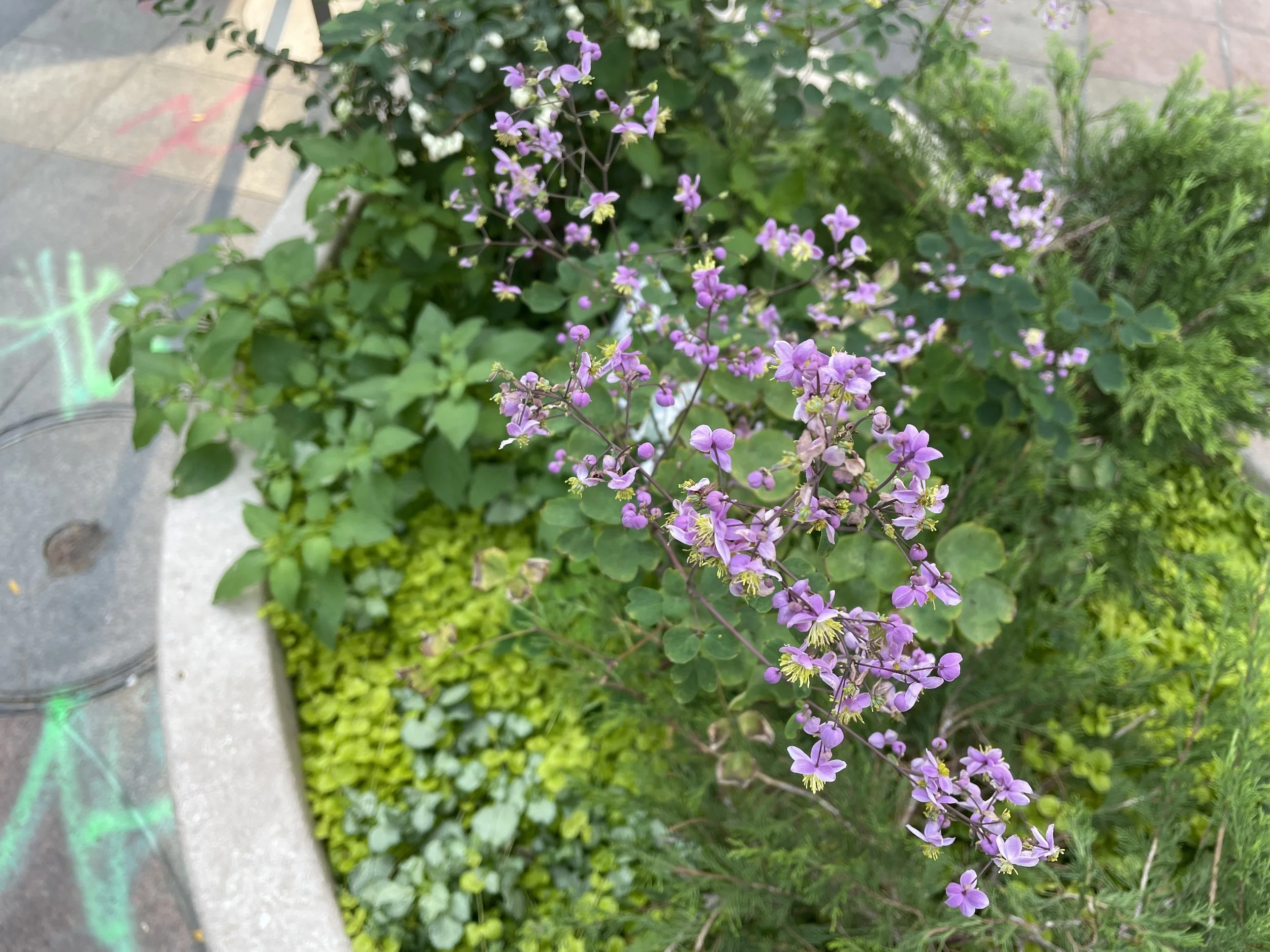By Gaelen Means, MLA
Most city planters and raised beds are planted four times a year with a mix of annuals, like pansies and begonias. Although these flowers are colorful, these types of planting plans are incredibly wasteful. The amount of energy, labor, and cost to plant and replant these garden beds through a season (often cities will replant the moment that they have stopped flowering), does not create a sustainable approach to the development of green spaces in urban areas.
For the past three years, we have been working with the Denver Downtown Partnership (DDP) and the Downtown Denver Business Improvement District (BID) to transition downtown Denver public planters to perennial planting plans. Together we plant and take care of a diverse mix of perennial and native plants, trees and shrubs that serve as a connection to the natural surrounding landscape that was Denver before Denver existed.
It is common to find city planters filled with annuals like begonias which are taken out and replanted seasonally.
In partnership with DDP, our planters are filled with perennial plants that can thrive for years.
DDP is a nonprofit organization focused on the growth and vitalization of downtown Denver and, throughout the past few years, we have provided horticultural expertise to the DDP as well as a system for tracking the success of these plants. We have also worked to engage the public in a conversation around the public benefits for this work as well as collecting feedback on how it is perceived.
“Our work in urban spaces asks questions about how a small network of planters in the public realm can engage people in a conversation about the overlap between people and ecosystems.”
This summer we worked with the DDP and BID to create an interactive online story map, which shares some of our initial learnings and observations with our Denver community about the project and progress to date. It is easy for curious community members to visit the website and learn about the history of the program, what is growing, and provide direct feedback on the project.
As a company that works mostly on rural, agricultural, and food systems focused projects, urban landscaping could feel like an outlier. Many of our projects grapple with asking complex research questions and developing business models aiming to understand how farms can become more resilient, ecologically integrated, and financially viable. Our work in urban spaces asks questions about how a small network of planters in the public realm can engage people in a conversation about the overlap between people and ecosystems.
Site plan for Larimer Uprooted
Larimer Uprooted, an urban rooftop farm, was one of our first urban landscape projects in downtown Denver.
In conversations amongst our team, we often use the term “Urban-Rural Divide” to describe the disconnect between people and the rich biological, geomorphological, and atmospheric systems beyond the city’s edge. For us, the term Urban-Rural Divide embodies the facts that our populations are becoming increasingly urbanized, that fewer and fewer people are engaged in an agriculturally related industry, and that the average age of our farmers is 57. The widening of the urban-rural divide means we, as humans, are more detached from broader systems and, to put it frankly, are less in control of our future.
Nathan McClintock, in his widely cited 2010 paper Why Farm the City? Theorizing Urban Agriculture through the Lens of Metabolic Rift, unpacks the concept of the urban-rural divide, using the term “Metabolic Rift”. Among the core concepts presented, McClintock identifies three ways in which the metabolic rift manifests,
ecological rift, which includes both the rift in a particular biophysical metabolic relationship (such as nutrient cycling) and the spatio-temporal rescaling of production that follows in its wake;
social rift, arising from the commodification of land, labor, and food at various scales; and
individual rift, the alienation of humans from nature and from the products of our labor.
Many of the current efforts to mitigate the impacts of climate change and prevent further impacts, have focused on addressing the first two points above. Many of our projects at Bio-Logical Capital are no different, however, we also realize the power and importance of the third point. We, as individuals, must reestablish our relationships with non-human systems.
Downtown Denver’s tree canopy is minimal compared to other parts of the city.
A few planters filled with locally adapted perennial and native plants may seem like a small step, but each planter on a downtown streetscape is an opportunity to start a conversation about the importance of ecological systems and the human relationship to them. It is the opportunity to bring the wonder and joy of these dynamic systems to people and places where they are most fragmented and most needed. Small steps toward reintegrating ecological layers into our regular lives is a key piece of enriching the present and ensuring the future.
Read more from Gaelen…






